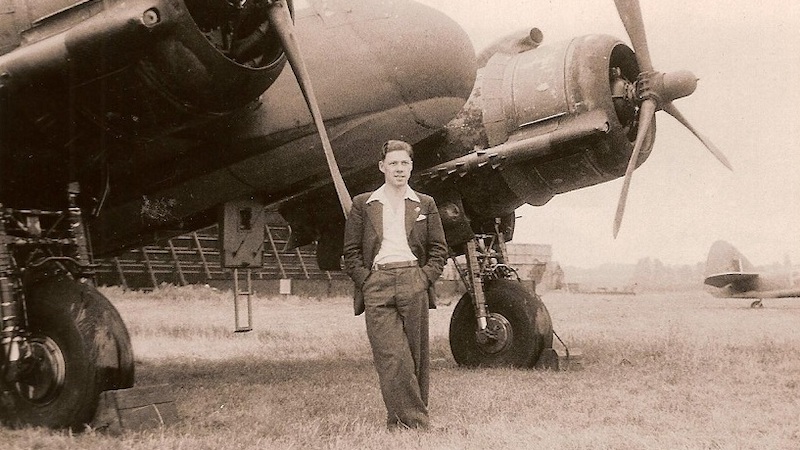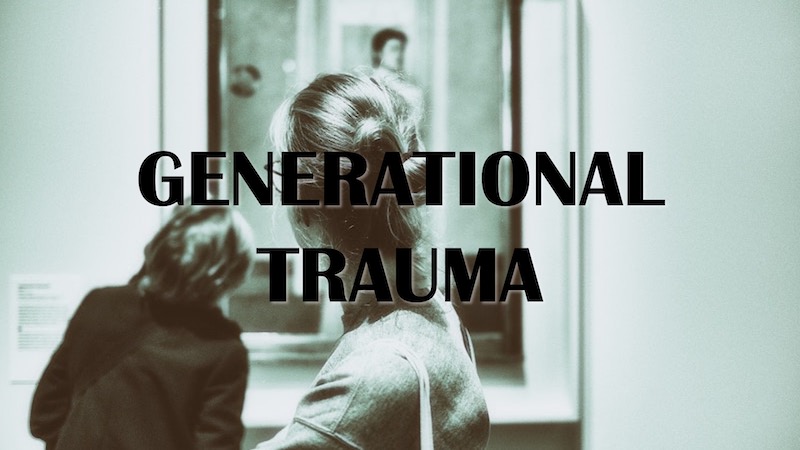The Beaufighter – assembling genealogy clues
- 12 November 2025
- Posted by: Michael H Hallett
- Category: Generational trauma ,

Genealogy is a jigsaw puzzle. Whether we’re just searching for facts or trying to recover our family’s emotional narrative, we seek out puzzle pieces to help us build up the picture. Very often, these pieces are unavailable. People have passed away, memories fade or have been deliberately unspoken, records lost or non-existent. Yet sometimes, we can reconstruct a likely picture from other clues. For example: my father and the Bristol Beaufighter.
My father joined the Bristol Engine Co. in 1938 as an engineering apprentice. As a young adult, I knew he’d been involved in test flying during the war, but he spoke of it very little. The implications of being an 18-year-old civilian, test-flying military prototypes in 1940—the year of the Battle of Britain—were lost on me.
It was only later I learned the casualty rate for British flight test crews was 25-30%. Back then, the limits of new aircraft were only discovered by exceeding them.
When I was 15 years old, several of my friends had motorcycles. I wanted one. My father was strongly opposed to this. In a rare mention of wartime, he said that his best friend Paul had been killed in a motorcycle crash. He also mentioned that Paul was a radar scientist. The implications of this were also lost—but somehow the fragment stuck, probably because of the tense situation.
Enter the Beaufighter
Shortly before she passed away in 2012, my mother gave me a stash of family documents and photographs I’d never seen. Our family narrative was shrouded in fog due to multiple emotional crises on both sides; my father’s silence on his wartime activities echoed this.
Among the photographs was one showing my father as a smartly dressed civilian in front of an aircraft—a Bristol Beaufighter. That this was a prototype was evidenced by an aircraft in the background, bearing the distinctive yellow ‘P in a circle’ marking the Royal Air Force used for test flying.

The Beaufighter was a Cinderella of an aircraft.
It was conceived in 1938 to meet an RAF requirement for a heavy fighter—a concept in vogue at the time but which fell out of favour as the war progressed. The Bristol Aeroplane Co. proposed to hasten development by mating the wings of the existing, underpowered Bristol Beaufort bomber to a new fuselage and the also new 1,500hp Hercules engine.
The first prototype flew in July 1939, by which time 300 had already been ordered. The Beaufighter’s first role was as a night fighter; it went on to excel in the ground attack and anti-shipping roles. Due to its tough construction, it was highly regarded in remote theatres with rugged terrain like Burma. A total of 5,928 were built.
Aircraft Interception
It is the night fighter variant that concerns us here.
Following defeat in the Battle of Britain—from which it never recovered—the Luftwaffe turned to night bombing raids on British cities and military targets. Single-engined aircraft like the Hawker Hurricane were used as night fighters, with limited success. (The Spitfire, with its narrow-track undercarriage, was tricky to land at night.)
The need for an effective night fighter was immense. The Beaufighter was big enough and powerful enough to carry the clunky first-generation airborne radar sets, known as Aircraft Interception (AI), which commenced production in July 1940. It was the artificial intelligence of its day; it could tell you where an enemy aircraft was in complete darkness.
My father’s best friend Paul was a radar scientist.
Top secret
This is where the genealogy puzzle pieces fit together. The photo shows my father worked on the Beaufighter prototypes. The only possible way he could’ve known a radar scientist—let alone well enough to be his best friend—was if they worked together on bringing the world’s first radar-equipped night fighter into service.
Which means that, at age 18, my father must have signed the Official Secrets Act and received a ‘Top Secret’ classification—for radar was among the most secret of Britain’s intelligence assets at this time.
Radar was so new in 1940 it wasn’t even known as radar. It was initially called RDF—Range & Direction Finding—until the U.S. Navy coined the well-known palindrome as an acronym for ‘radio detection and ranging’ around this time.
The Beaufighter entered service in August 1940—the height of the Battle of Britain—and achieved its first radar-guided ‘kill’ in November. By the spring of 1941, sustained losses forced the abandonment of the German night-bombing campaign.
Seeing the bigger picture
Just as the Beaufighter was assembled from pieces never quite intended to fit, so this story has come together from scraps of information assembled over time. Putting them together brings mixed feelings.
There is great pride at recognising my father’s war service, not just his contribution to the war effort but also the technical innovation. Yet there is a sense of loss at never knowing this until long after he passed away, as well as sorrow that he lost his best friend.
Beyond this there’s a bigger picture of the emotional impact of the situation. The Official Secrets Act, the ‘top secret’ classification, the pressure of bringing this aircraft into service when the whole country was visibly suffering, the loss of his best friend—all heaped on the shoulders of an 18-year-old from a fragmented family.
My father once spoke of writing a book, but it never happened. The pressure for silence continues long after the need has passed. I see its effect in his own silent nature—and in mine, responding to a situation long gone. His fear that I, too, like Paul, might die in a motorcycle crash. So many unspoken burdens that were never voiced.
Finally, there is gratitude at having recovered this story. So many stories are lost that we know only fragments of or even lost without anyone’s knowledge. Have you managed to piece together any parts of your family story from separate pieces?
Next steps
For further resources on generational trauma, both free and paid, please click on this image.
Photo: Bristol Beaufighter 1F, 604 Sqn RAF, 1941 (public domain)

